Measurement of Non-Stationary Characteristics of a Landfall Typhoon at the Jiangyin Bridge Site
Abstract
:1. Introduction
2. Measurement and Data Source
2.1. Anemometer Utilized in Field Measurement
2.2. Description of Typhoon Soudelor
3. Mean Wind Characteristics
3.1. Measured Wind Samples of Typhoon Soudelor
3.2. General Wind Models
3.3. Extraction of the Time-Varying Mean
4. Turbulent Wind Characteristics
4.1. Turbulence Intensity
4.2. Gust Factor
4.3. Turbulence Integral Scale
4.4. Turbulence Power Spectral Density
5. Conclusions
- The time-varying mean differs much from the constant mean for the non-stationary wind records, which means the stationary assumption is invalid. For the longitudinal and lateral turbulences of Typhoon Soudelor, the longitudinal wind speed presents stronger non-stationarity than the other case.
- The non-stationary turbulence intensities are smaller than stationary ones for both longitudinal and lateral cases. The difference in the longitudinal case is more obvious than that in the lateral case, which means the non-stationarity of the longitudinal turbulence is much stronger than that of the lateral wind.
- Except low wind speed cases, the suggestions from both ASCE7-10 and Chinese code generally coincide well with the measured turbulence intensities for both longitudinal and lateral cases of Typhoon Soudelor.
- The two fitted models can well describe the stationary and non-stationary relationships between gust factor and turbulence intensity. Among the presented empirical models, only the Ishizaki model is similar to the fitted non-stationary expression, and can well describe the measured relationship between non-stationary gust factor and non-stationary turbulence intensity.
- Non-stationary turbulence integral scales are much smaller than stationary ones, which is mainly attributed to the extraction of the time-varying mean. Detrending the non-stationary wind records will filter some low-frequency components, which reflect the large-scale eddies in turbulence.
- The non-stationary power spectral density is lower than the stationary case in low-frequency ranges, while the two cases keep consistent in the rest of the ranges. This phenomenon can be well explained by the filtering of the time-varying mean, which physically performs as the low-frequency content in wind fluctuations.
- The fitted non-stationary model via modulation can perfectly satisfy the measured non-stationary power spectrum, indicating the effectiveness of the general model for non-stationary turbulence.
- There is a significant difference between stationary and non-stationary wind characteristics. In light of the typhoon cases with strong non-stationarity, a shift consideration from stationarity to non-stationarity is highlighted for the analysis of wind effects.
Acknowledgments
Author Contributions
Conflicts of Interest
References
- Tao, T.Y.; Wang, H.; Li, A.Q. Stationary and nonstationary analysis on the wind characteristics of a tropical storm. Smart Struct. Syst. 2017, 17, 1067–1085. [Google Scholar] [CrossRef]
- Xu, Y.L.; Zhu, L.D.; Wong, K.Y.; Chan, K.W.L. Field measurement results of Tsing Ma suspension bridge during Typhoon Victor. Struct. Eng. Mech. 2000, 10, 545–559. [Google Scholar] [CrossRef]
- Wang, H.; Li, A.Q.; Niu, J.; Zong, Z.H.; Li, J. Long-term monitoring of wind characteristics at Sutong Bridge site. J. Wind Eng. Ind. Aerodyn. 2013, 115, 39–47. [Google Scholar] [CrossRef]
- Ding, Q.; Lee, P.K.K. Computer simulation of buffeting actions of suspension bridges under turbulent wind. Comput. Struct. 2000, 76, 787–797. [Google Scholar] [CrossRef]
- Li, Q.S.; Zhi, L.H.; Hu, F. Field monitoring of boundary layer wind characteristics in urban area. Wind Struct. 2009, 12, 553–574. [Google Scholar] [CrossRef]
- Kareem, A. Structure of wind field over the ocean. In Proceedings of the International Workshop on Offshore Winds and Icing, Halifax, NS, Canada, 7–11 October 1985. [Google Scholar]
- Song, L.L.; Li, Q.S.; Chen, W.C.; Qin, P.; Huang, H.H.; He, Y.C. Wind characteristics of a strong typhoon in marine surface boundary layer. Wind Struct. 2012, 15, 1–15. [Google Scholar] [CrossRef]
- Li, L.X.; Kareem, A.; Xiao, Y.Q.; Song, L.L.; Zhou, C.Y. A comparative study of field measurements of the turbulence characteristics of typhoon and hurricane winds. J. Wind Eng. Ind. Aerodyn. 2015, 140, 49–66. [Google Scholar] [CrossRef]
- Davenport, A.G. A Statistical Approach to the Treatment of Wind Loading on Tall Masts and Suspension Bridges. Ph.D. Thesis, University of Bristol, Bristol, UK, 1961. [Google Scholar]
- Isyumov, N.; Alan, G. Davenport’s mark on wind engineering. J. Wind Eng. Ind. Aerodyn. 2012, 104, 49–66. [Google Scholar]
- American Society of Civil Engineering. Minimum Design Loads for Buildings and Other Structures; ASCE7-10; American Society of Civil Engineering: Reston, VA, USA, 2010. [Google Scholar]
- Professional Standard PRC. Wind-Resistant Design Specification for Highway Bridges; China Communications Press: Beijing, China, 2004. [Google Scholar]
- Architectural Institute of Japan. Recommendations for Loads on Buildings; Architectural Institute of Japan: Tokyo, Japan, 2004. [Google Scholar]
- Xu, Y.L.; Chen, J. Characterizing nonstationary wind speed using empirical mode decomposition. ASCE J Struct. Eng. 2004, 130, 912–920. [Google Scholar] [CrossRef]
- Wang, H.; Wu, T.; Tao, T.Y.; Li, A.Q.; Kareem, A. Measurements and analysis of non-stationary wind characteristics at Sutong Bridge in Typhoon Damrey. J. Wind Eng. Ind. Aerodyn. 2016, 151, 100–106. [Google Scholar] [CrossRef]
- McCullough, M.; Kwon, D.K.; Kareem, A.; Wang, L.J. Efficacy of averaging interval for nonstationary winds. ASCE J. Eng. Mech. 2014, 140, 1–19. [Google Scholar] [CrossRef]
- Wang, L.J.; Kareem, A. Modeling of non-stationary winds in gust fronts. In Proceedings of the Ninth Joint Specialty Conference on Probabilistic Mechanics and Structural Reliability, Albuquerque, NM, USA, 26–29 July 2004. [Google Scholar]
- Chen, L.; Letchford, C.W. Proper orthogonal decomposition of two vertical profiles of full-scale nonstationary downburst wind speeds. J. Wind Eng. Ind. Aerodyn. 2005, 93, 187–216. [Google Scholar] [CrossRef]
- Wang, L.J.; McCullough, M.; Kareem, A. A data-driven approach for simulation of full-scale downburst wind speeds. J. Wind Eng. Ind. Aerodyn. 2013, 123, 171–190. [Google Scholar] [CrossRef]
- Su, Y.W.; Huang, G.Q.; Xu, Y.L. Derivation of time-varying mean for non-stationary downburst winds. J. Wind Eng. Ind. Aerodyn. 2015, 141, 39–48. [Google Scholar] [CrossRef]
- Tao, T.Y.; Wang, H.; Wu, T. Comparative study of the wind characteristics of a strong wind event based on stationary and nonstationary models. ASCE J. Struct. Eng. 2016, 143, 04016230. [Google Scholar] [CrossRef]
- Ishizaki, H. Wind profiles, turbulence intensities and gust factors for design in typhoon-prone regions. J. Wind Eng. Ind. Aerodyn. 1983, 13, 55–66. [Google Scholar] [CrossRef]
- Choi, E.C.C. Gradient height and velocity profile during typhoons. J. Wind Eng. Ind. Aerodyn. 1983, 13, 31–41. [Google Scholar] [CrossRef]
- Cao, S.Y.; Tamura, Y.; Kikuchi, N.; Saito, M.; Nakayama, I.; Matsuzaki, Y. Wind characteristics of a strong typhoon. J. Wind Eng. Ind. Aerodyn. 2009, 97, 11–21. [Google Scholar] [CrossRef]
- Kaimal, J.C. Spectral characteristics of surface-layer turbulence. Q. J. R. Meteorol. Soc. 1972, 98, 563–589. [Google Scholar] [CrossRef]

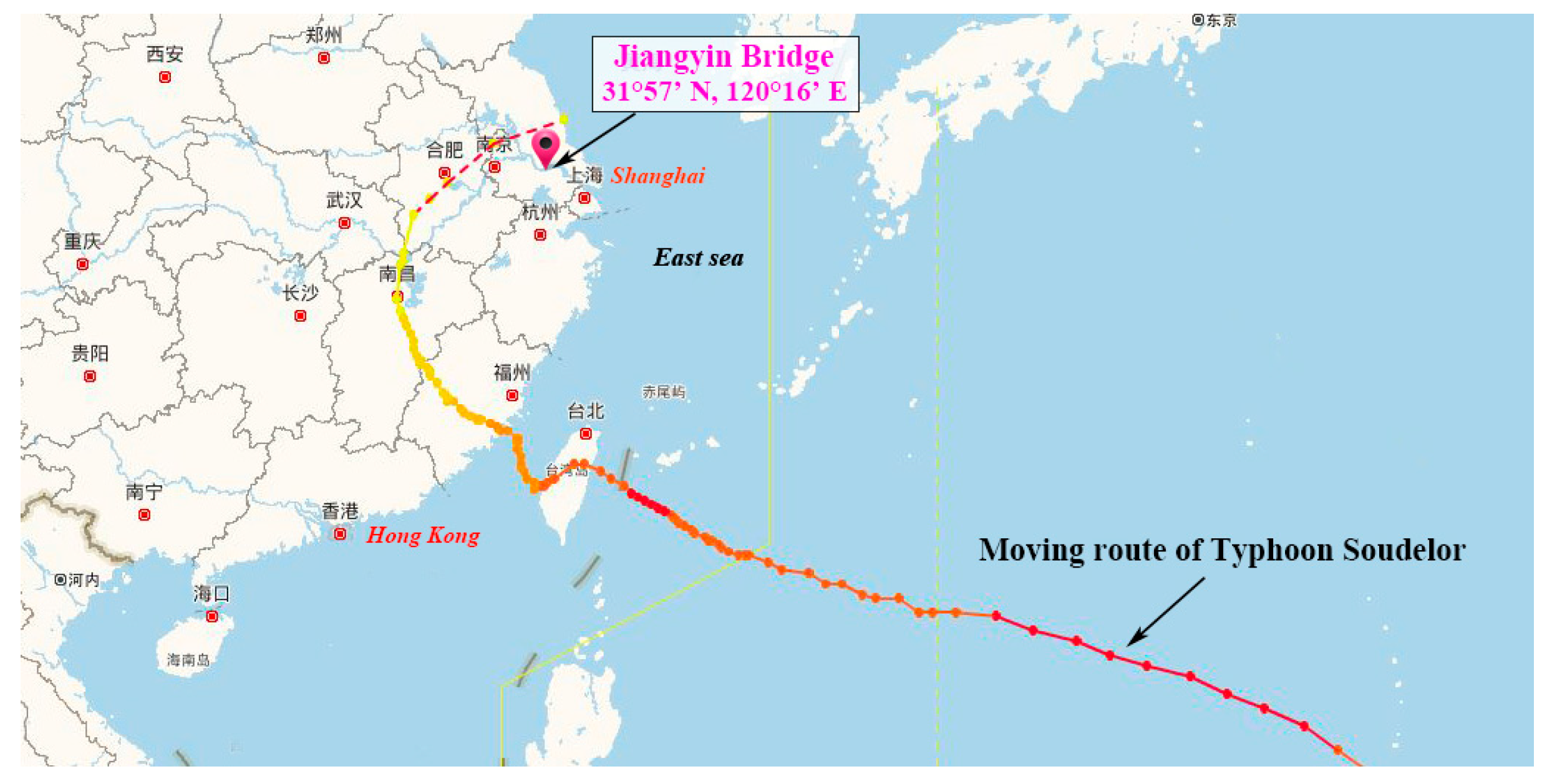
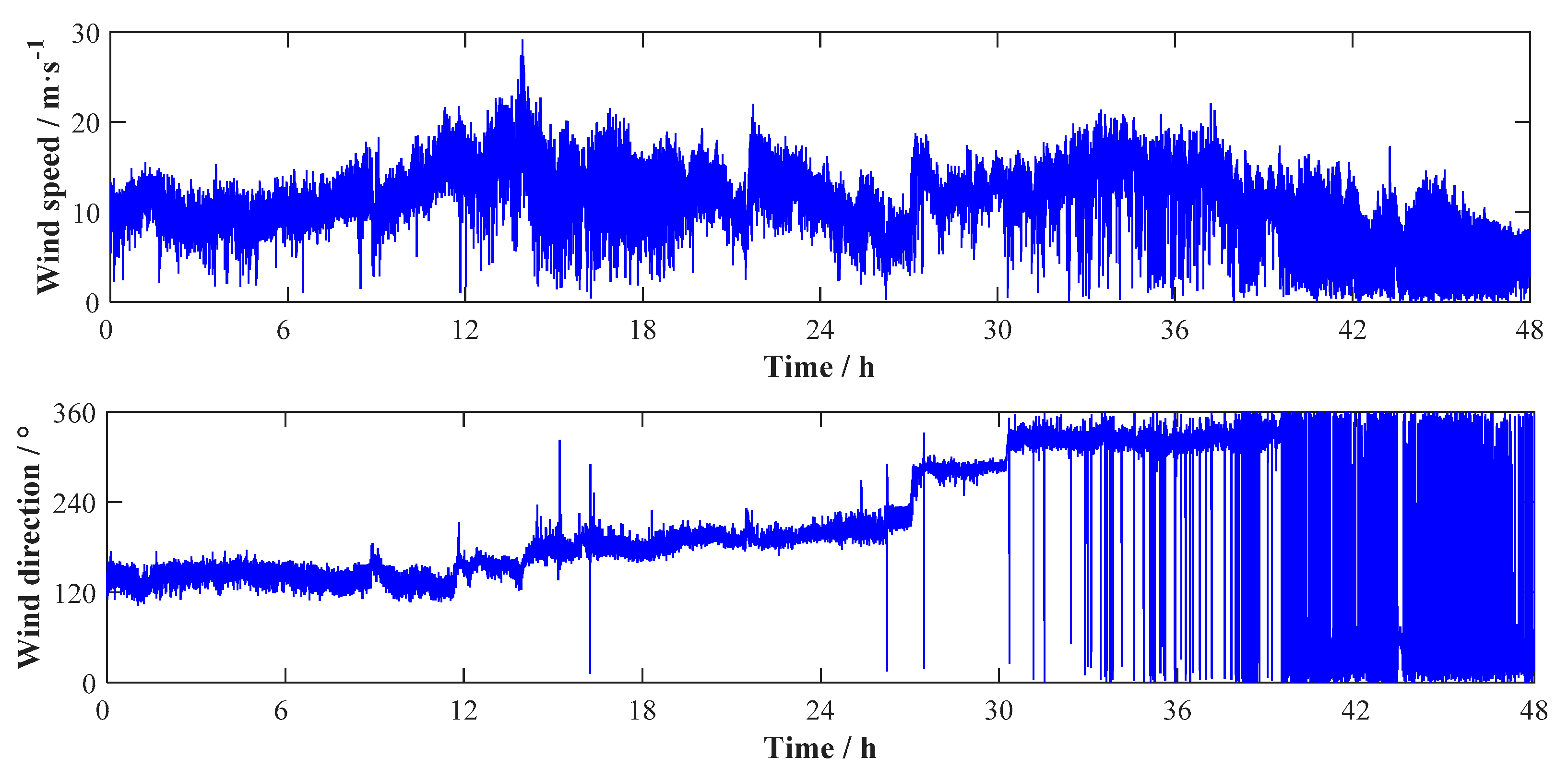
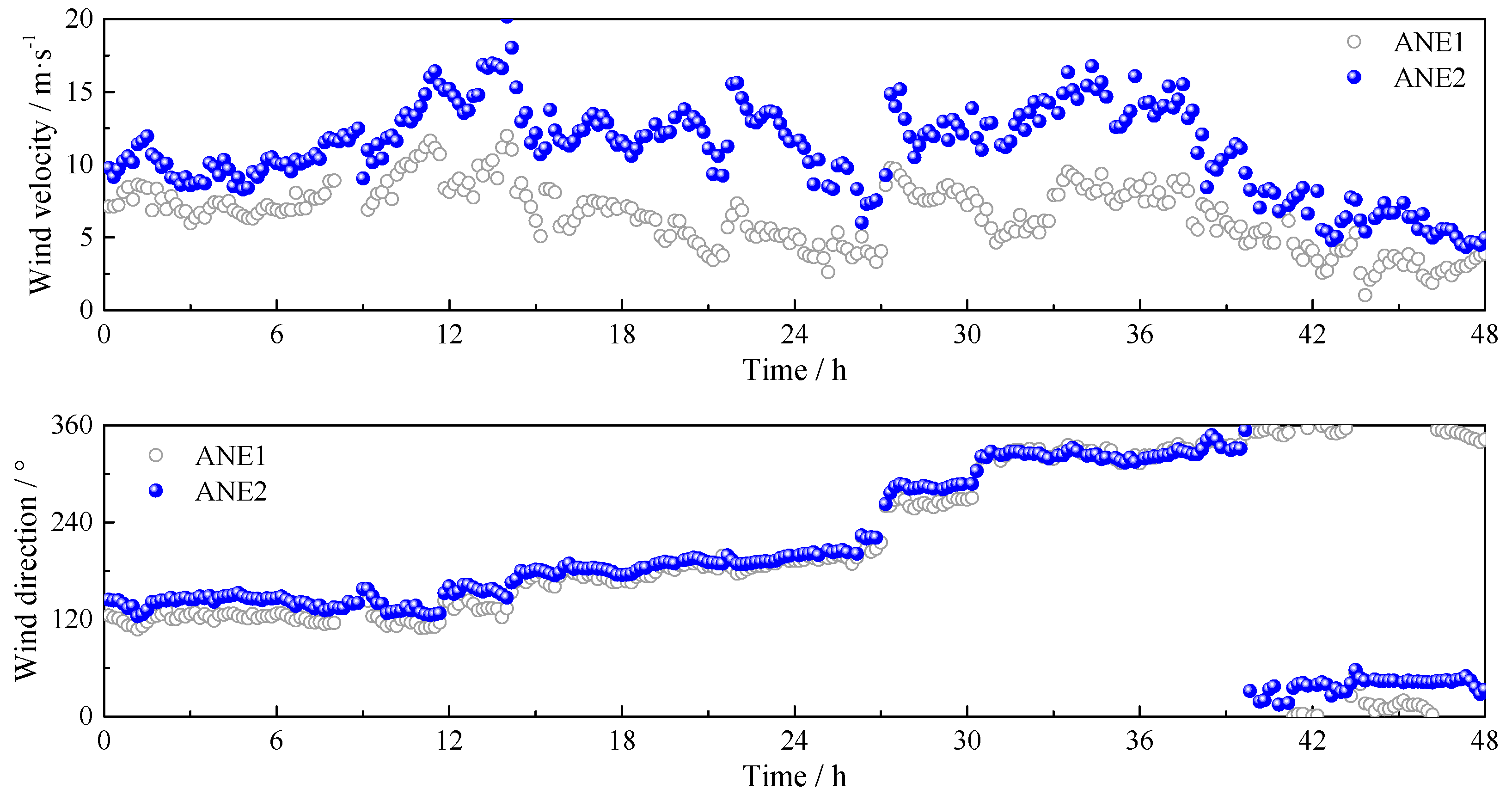
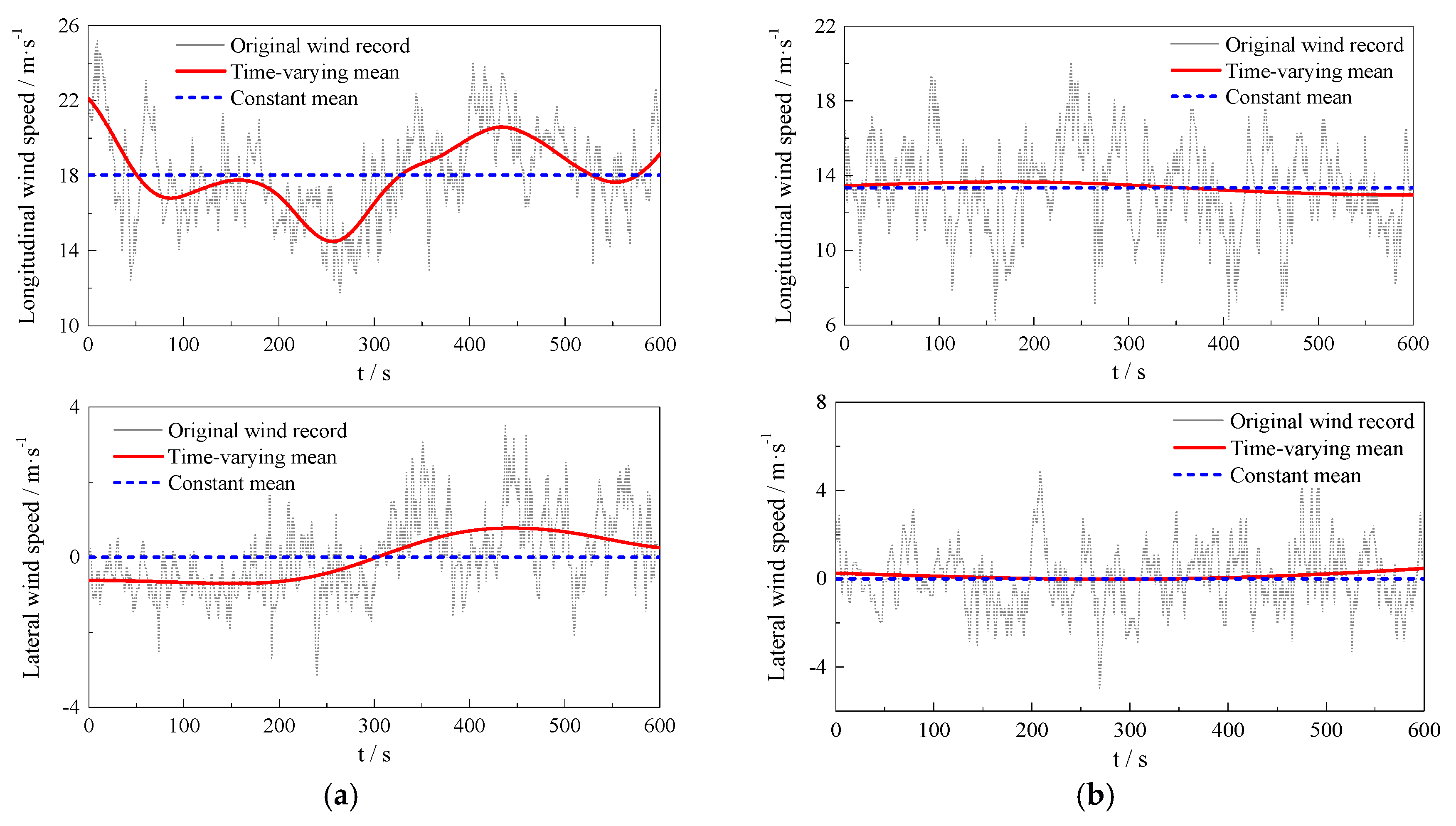
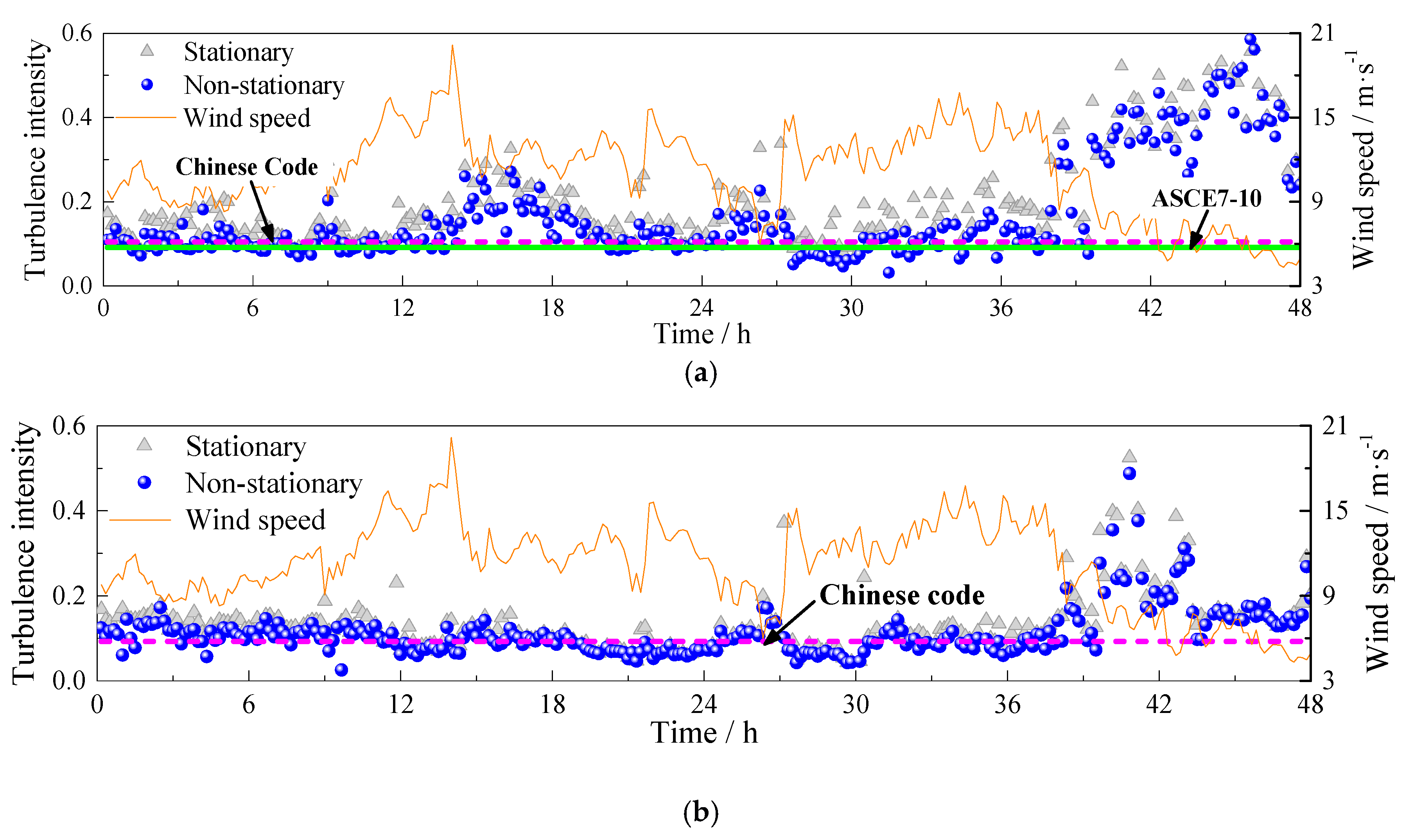

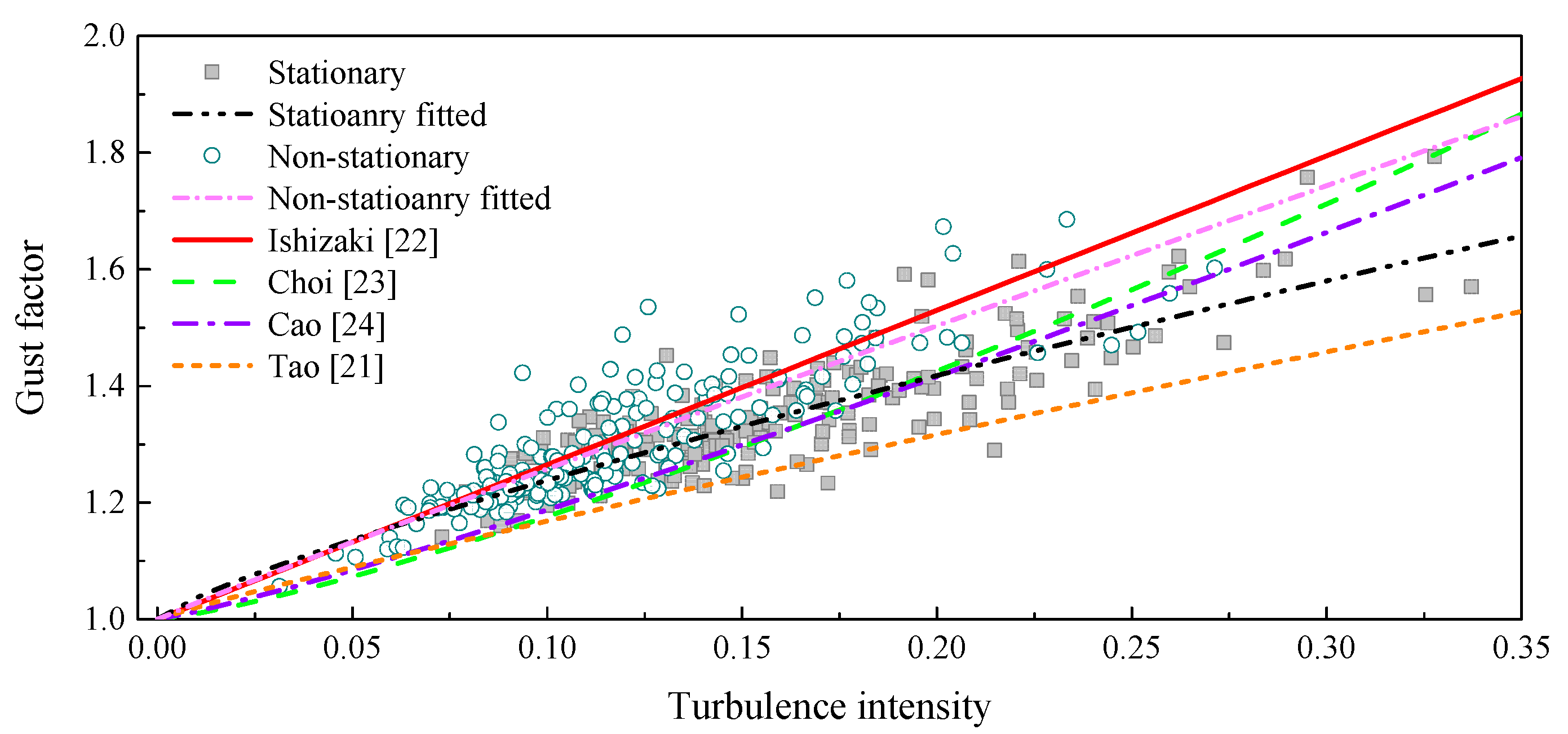
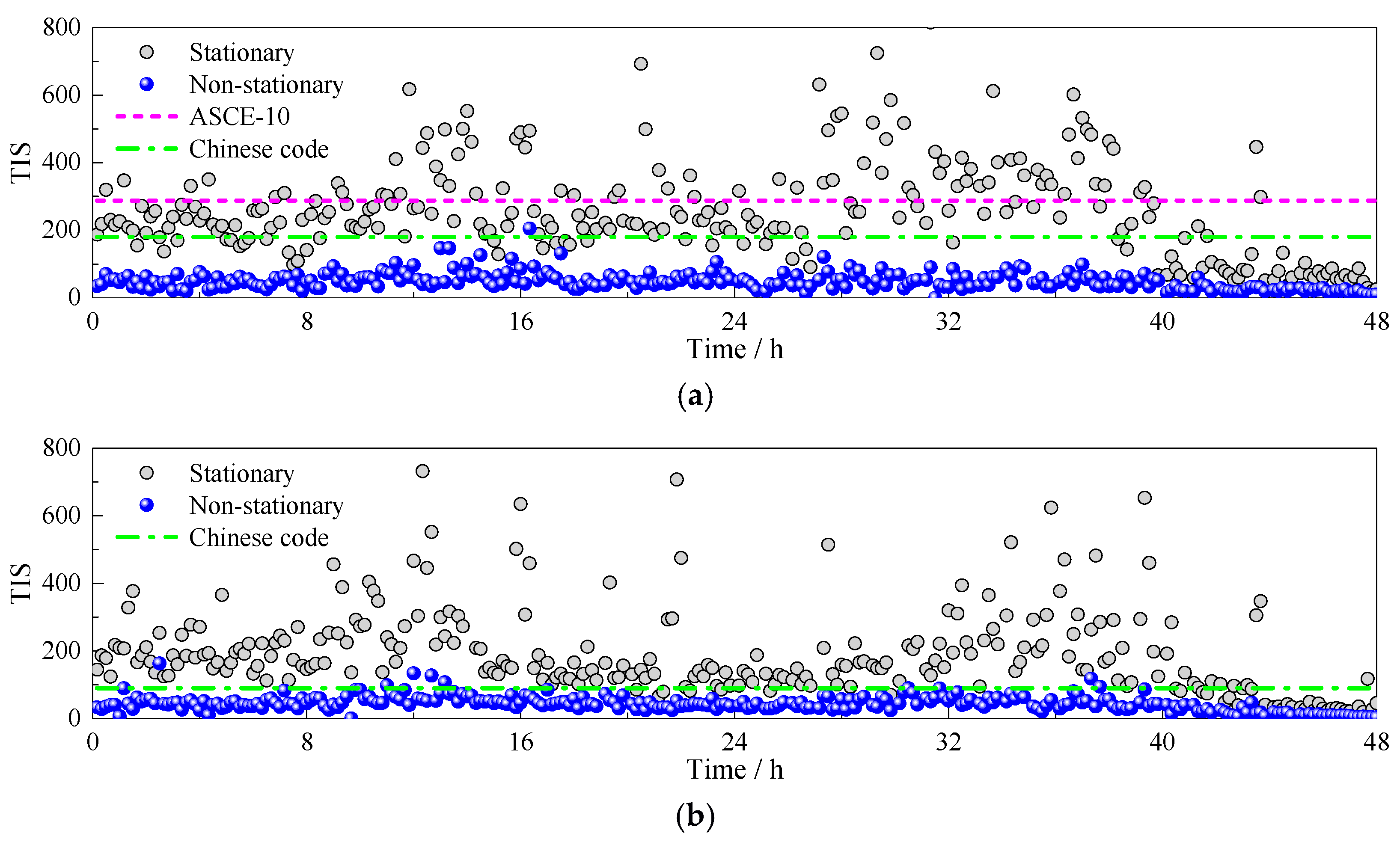

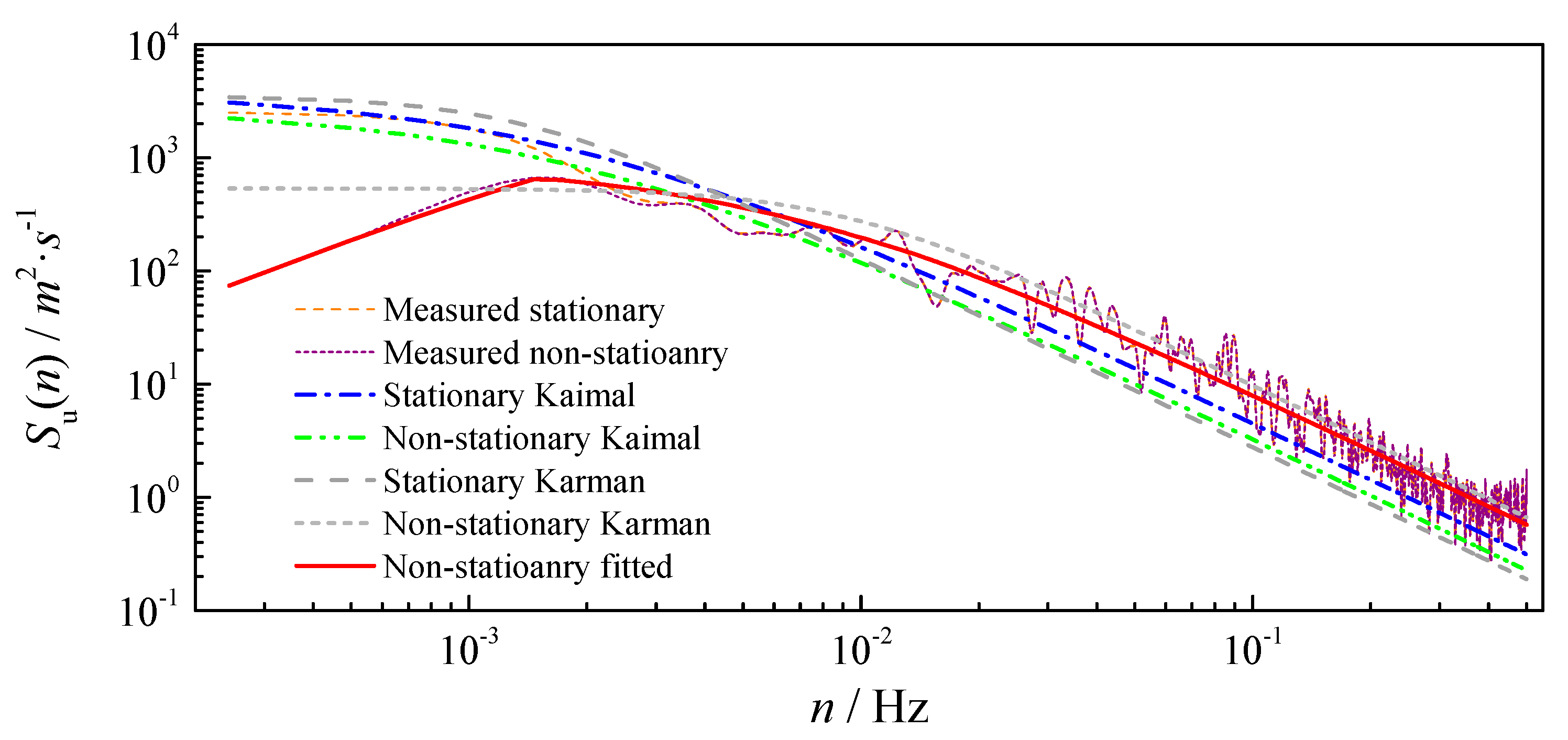
© 2017 by the authors. Licensee MDPI, Basel, Switzerland. This article is an open access article distributed under the terms and conditions of the Creative Commons Attribution (CC BY) license (http://creativecommons.org/licenses/by/4.0/).
Share and Cite
He, X.; Qin, H.; Tao, T.; Liu, W.; Wang, H. Measurement of Non-Stationary Characteristics of a Landfall Typhoon at the Jiangyin Bridge Site. Sensors 2017, 17, 2186. https://doi.org/10.3390/s17102186
He X, Qin H, Tao T, Liu W, Wang H. Measurement of Non-Stationary Characteristics of a Landfall Typhoon at the Jiangyin Bridge Site. Sensors. 2017; 17(10):2186. https://doi.org/10.3390/s17102186
Chicago/Turabian StyleHe, Xuhui, Hongxi Qin, Tianyou Tao, Wenshuo Liu, and Hao Wang. 2017. "Measurement of Non-Stationary Characteristics of a Landfall Typhoon at the Jiangyin Bridge Site" Sensors 17, no. 10: 2186. https://doi.org/10.3390/s17102186




